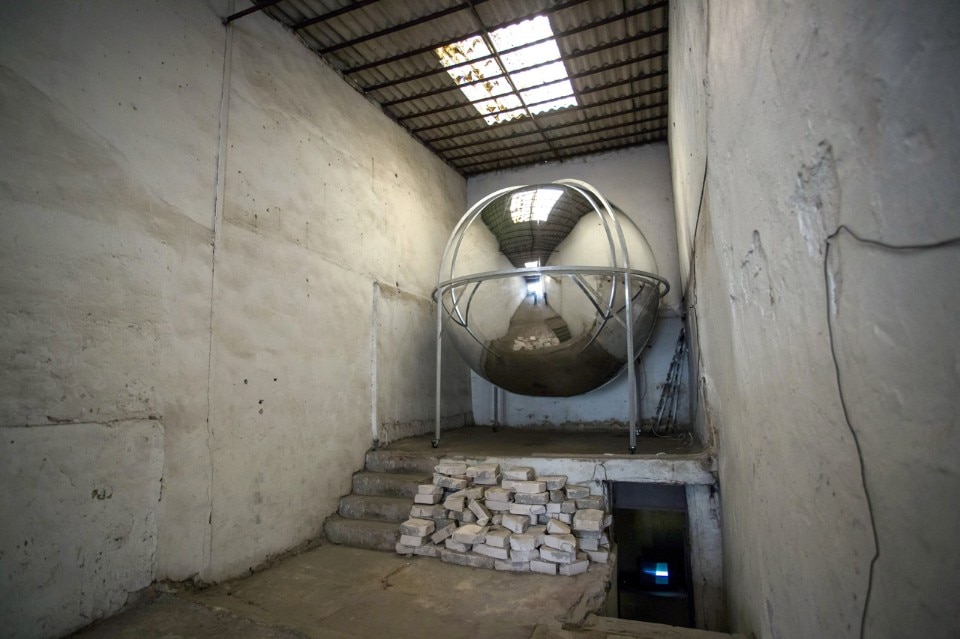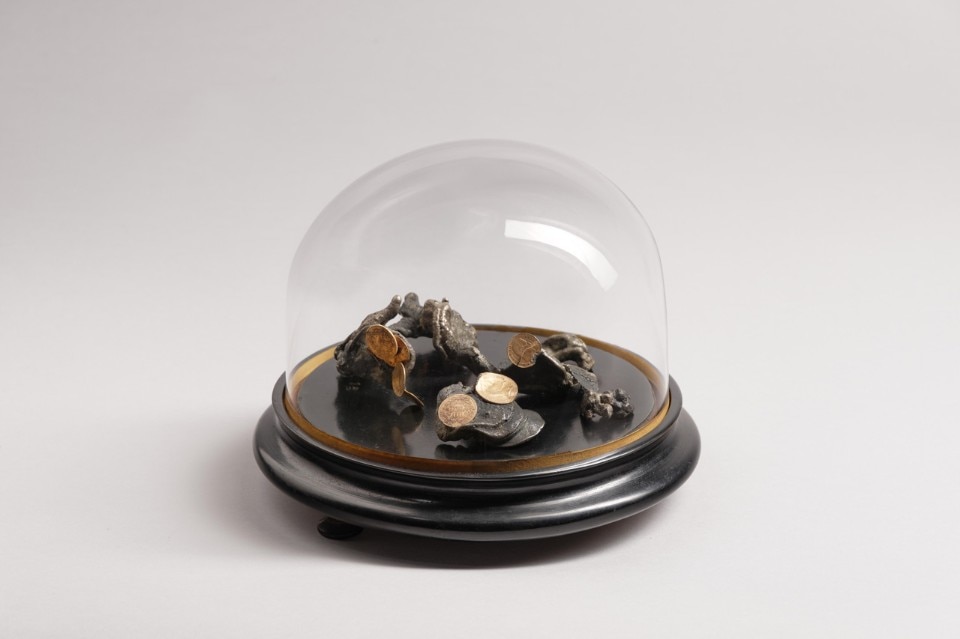
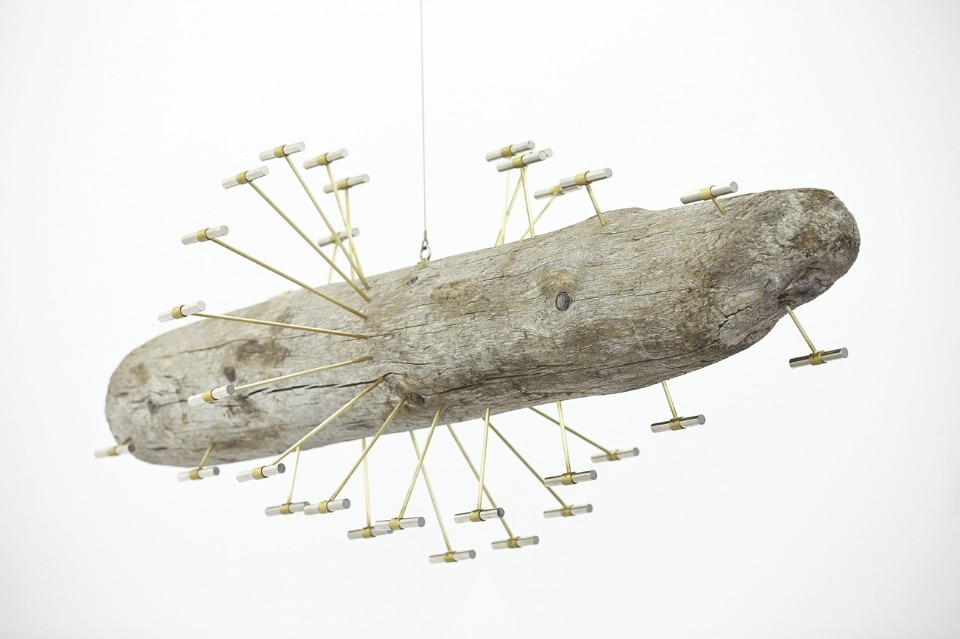
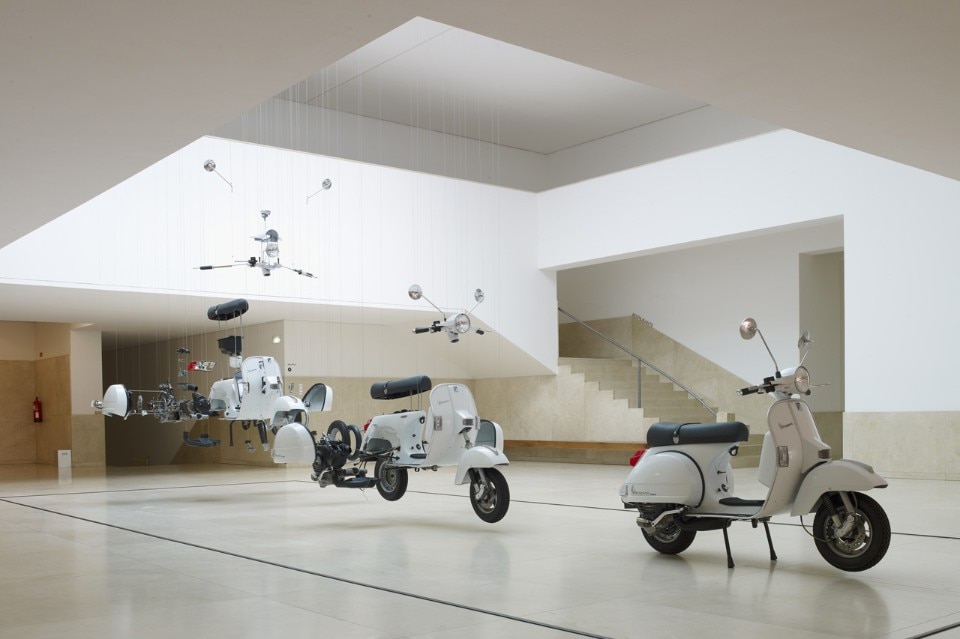
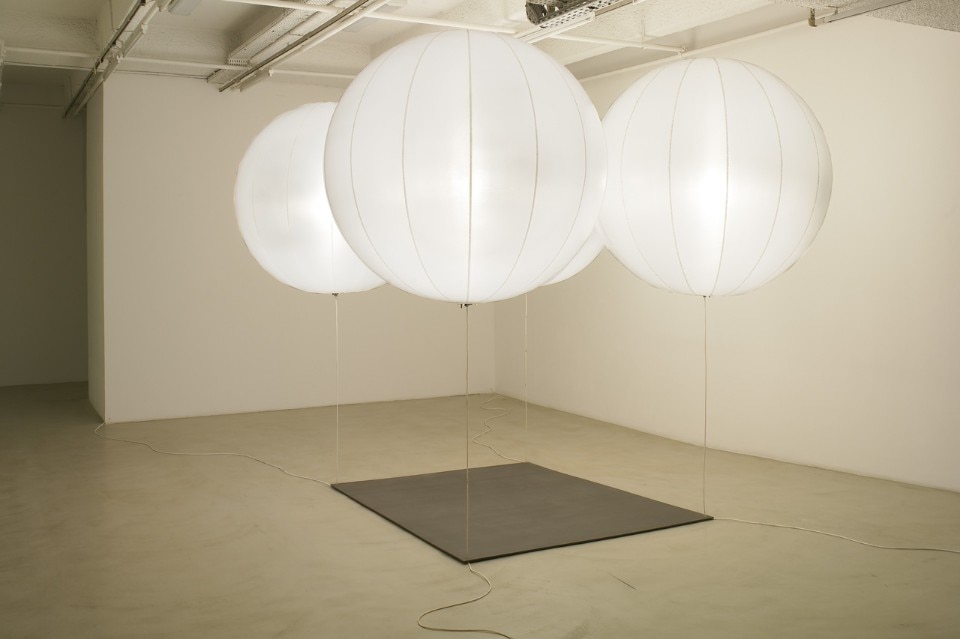
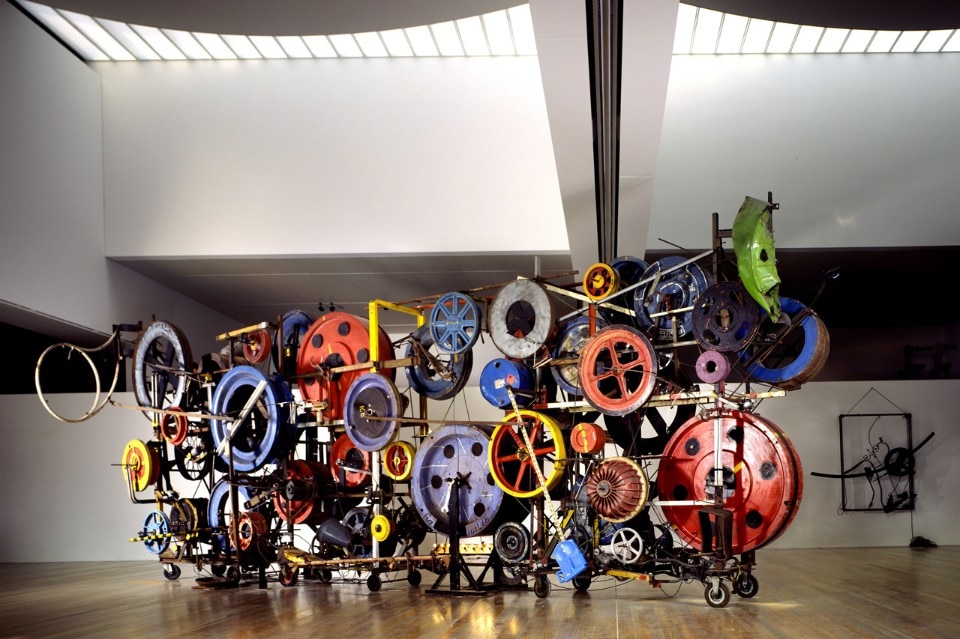
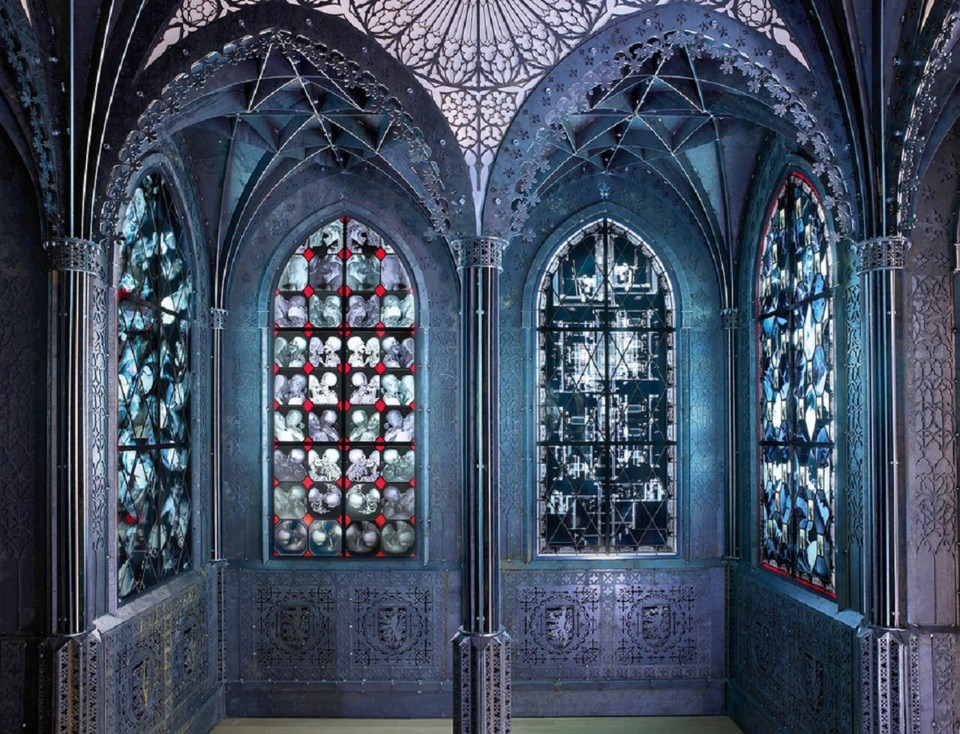
The exhibition also features a multidisciplinary workshop led by Paul Granjon to produce the robot-guide Guido, surrounded by a protective mesh that leads to Wim Delvoye’s Gothic chapel (2006), its windows decorated with X-ray fragments of the human body from Cloaca, a device reproducing the human digestive system.
By the end of the exhibition route, humans are no longer measuring the world but their ability to shape it and to place themselves at the point closest to the centre of the Earth and the role of creator in the never-ending process of perfecting it.
1 Roberto Barbanti, Dall’auto-referenzialità all’inter-referenzialità. La questione della complessità nell’esempio dell’arte genetica, in Roberto Barbanti, Luciano Boi e Mario Neve (dir.), Paesaggi della complessità. La trama delle cose e gli intrecci tra natura e cultura, Milano – Udine, Mimesis Edizioni, 2011


